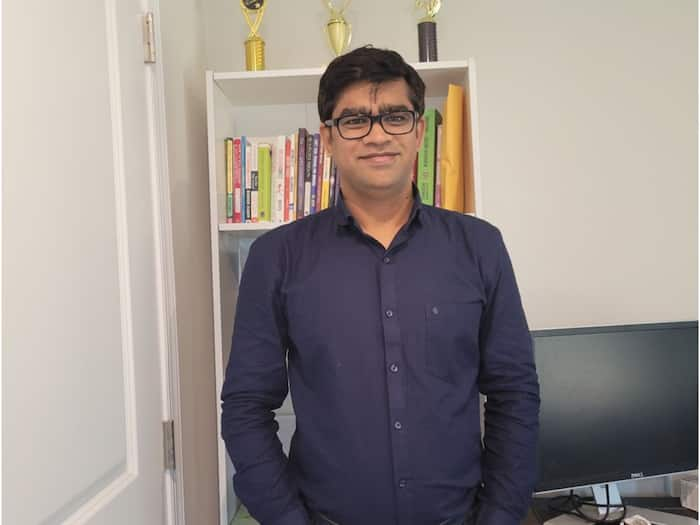
Written By Deepti Ratnam
Published By: Deepti Ratnam | Published: Feb 20, 2025, 04:31 PM (IST)

In the healthcare sector, the difficulty of effectively processing claims has long been a major worry. Through the implementation of scalable automation in real-time claims processing, Chandra, a seasoned consultant with vast experience in modernizing healthcare systems, has been able to take on this challenge head-on. Chandra has significantly improved claims workflows, which benefits both organizations and end users, thanks to his leadership, creative solutions, and dedication to increasing system efficiency.
Reportedly, the leading a group of ten experts to update claims procedures, Chandra was the project manager for the Project for Claims Submission. More than 200 intricate rules governing the validation and submission of claims were automated as part of this project, which greatly shortened turnaround times and decreased errors. He made sure that the system could reliably and effectively manage peak loads by creating and implementing a scalable architecture that could process large numbers of claims in real time.
Among Chandra’s noteworthy accomplishments was the development of an intuitive user interface for handling 837 claims. End users found this interface to be user-friendly and simple to use, and it integrated with several third-party APIs to guarantee real-time claims processing with few errors or delays. By reducing manual interventions, Chandra significantly enhanced the accuracy of the claims submission process while also accelerating decision-making times. This, in turn, improved overall operational efficiency and stakeholder satisfaction.
Furthermore, the project’s success was greatly influenced by Chandra’s method of data integration. He unified legacy and modern systems into a cohesive pipeline, improving data flow and providing real-time access to claims statuses. This level of integration not only streamlined operations but also established a foundation for transparency, which allowed stakeholders to track claims with greater ease and confidence. The introduction of scalable automation in claims processing became a benchmark for the healthcare industry, showcasing how advanced technology can dramatically enhance operational efficiency while maintaining regulatory compliance.
Chandra’s work also emphasized using cloud platforms, like AWS cloud, to maximize cost-effectiveness and scalability. By utilizing dynamic resource allocation, he was able to design systems that adapted to fluctuating claim volumes, ensuring optimal performance at all times. This cloud-based architecture also allowed for secure data storage and processing, a critical aspect of managing sensitive healthcare information.
The outcomes of Chandra’s work have been extremely impressive. He greatly enhanced the user experience by cutting claim submission delays. Additionally, his work in migrating legacy systems to modern tech stacks, including React, Node.js, and Docker, not only resulted in substantial cost savings but also streamlined maintenance and centralized data management. His contributions have also had a tangible impact on system reliability, achieving a 99.9% uptime rate, which is essential for the uninterrupted processing of claims.
Chandra’s work has had a particularly significant impact on his organization. He increased operational efficiency and scalability by automating intricate rules and processes, which allowed the organization to handle high claim volumes without compromising accuracy or performance. This transformation not only enhanced internal workflows but also fostered greater satisfaction among stakeholders, who appreciated the faster and more transparent claims submission process.
Not with standing these achievements, Chandra has encountered many difficulties, mainly in integrating various data sources from legacy systems and guaranteeing the system’s resilience under high loads. Overcoming these obstacles required meticulous planning, as well as the ability to adapt and optimize systems in real time. However, by addressing these challenges head-on, Chandra’s team was able to achieve significant operational improvements, transforming claims processing into a more efficient, secure, and scalable process.
According to Chandra, adopting serverless and cloud-native architectures will be crucial to advancing innovation in real-time claims processing in the future. These models offer on-demand scalability, which is crucial as the healthcare industry continues to grow and the volume of claims increases. Additionally, Chandra emphasizes the importance of data interoperability, suggesting that the seamless integration of third-party APIs and open standards will be vital for enabling faster claims processing in the years to come. As he reflects on his journey, he shares his final insight: “The future of claims processing lies in automation and scalability, but success depends on designing systems that are both powerful and intuitive for end-users. In healthcare, it’s not just about speed; it’s about making the experience as seamless as possible for everyone involved.”
In summary, Chandra’s work is a prime example of how seasoned consultants can significantly influence sectors such as healthcare. His focus on automation, scalability, and system resilience has led to real improvements in claims processing, setting new standards for efficiency and accuracy in the field.